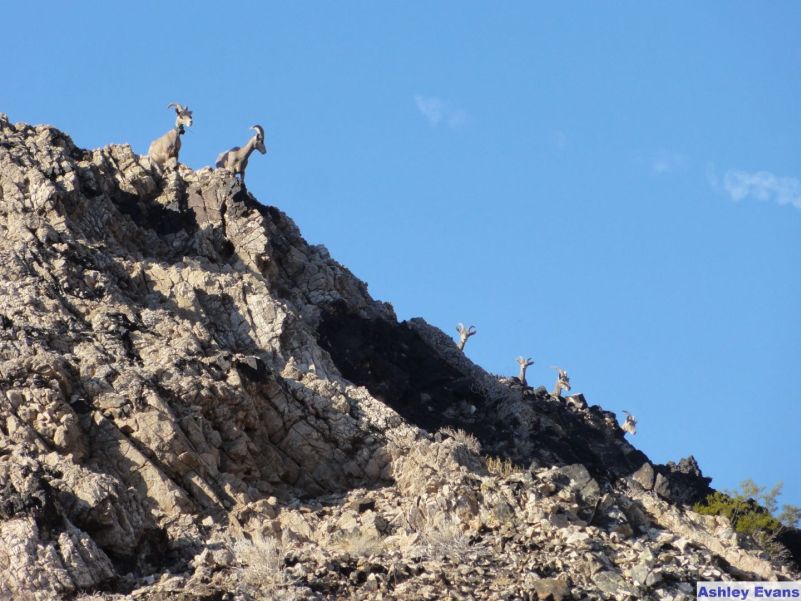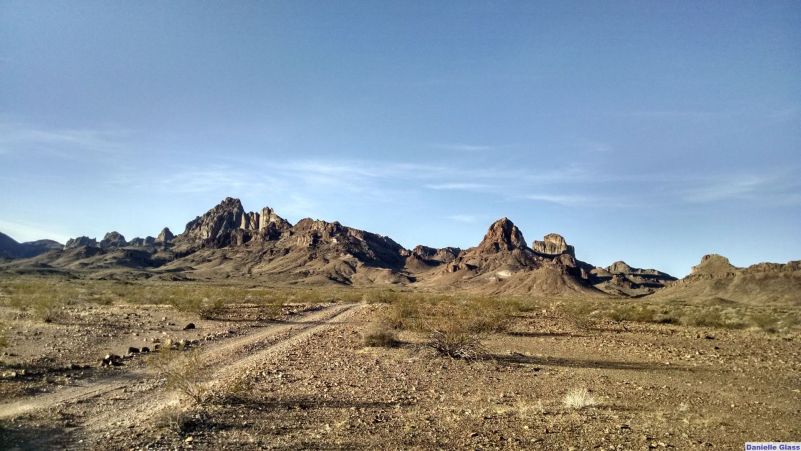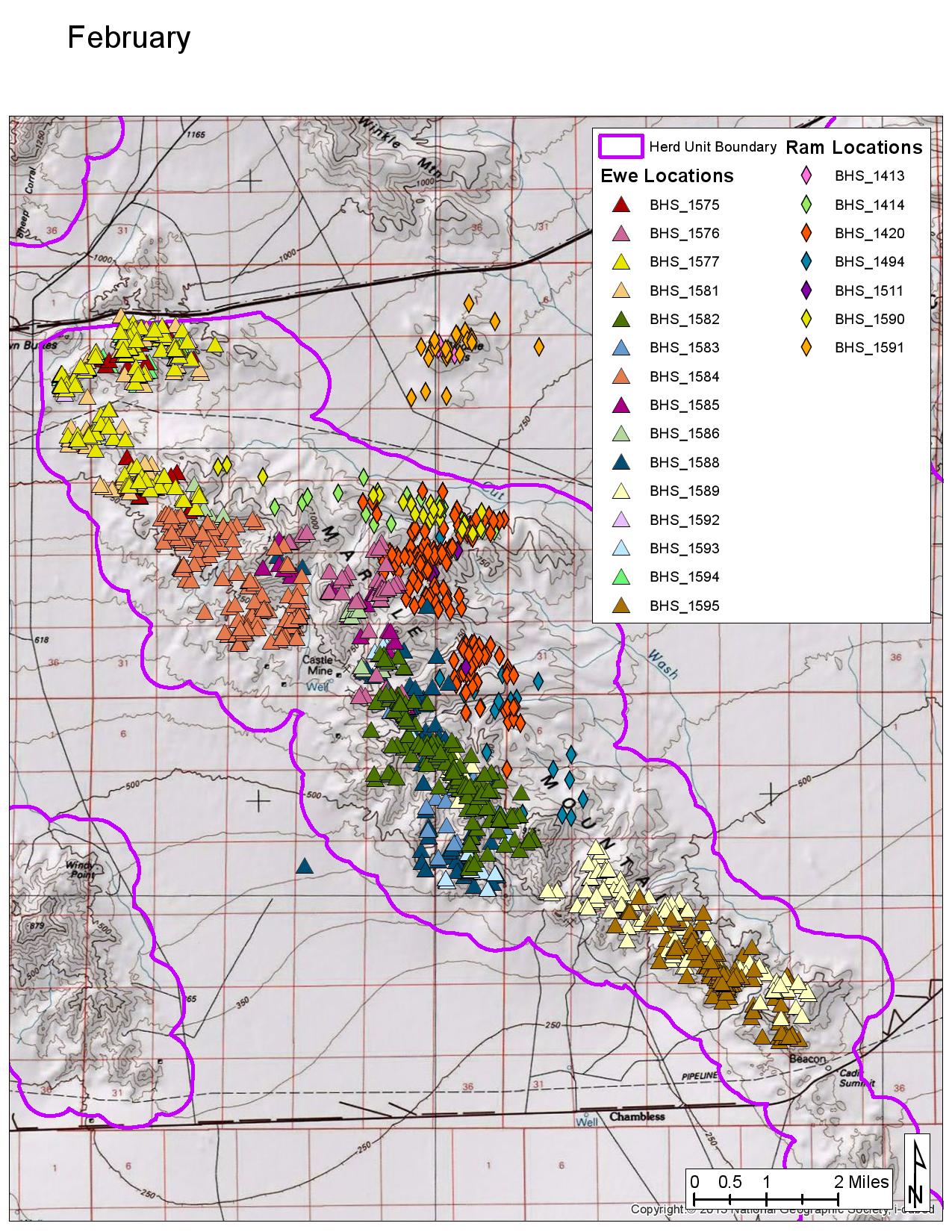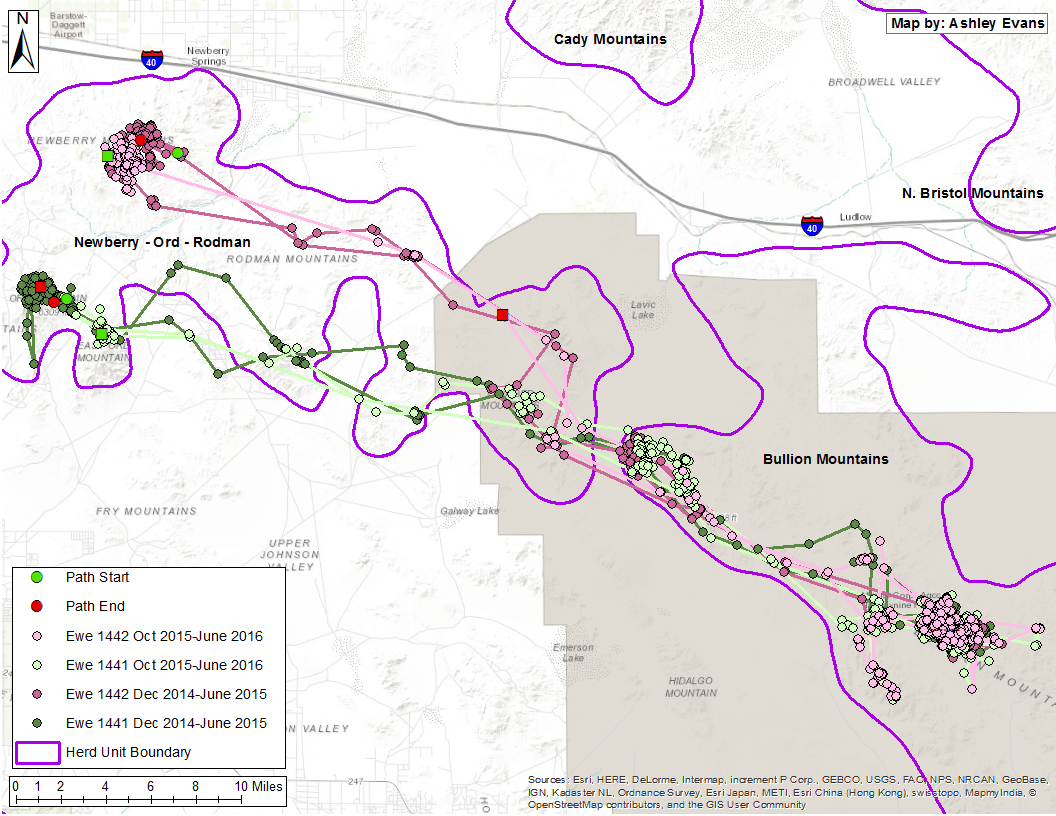 This South Bristol ewe group in "escape" terrain. Escape terrain is characterized by steep slopes, rocky terrain to avoid predator attacks. CDFW photo by Ashley Evans.
This South Bristol ewe group in "escape" terrain. Escape terrain is characterized by steep slopes, rocky terrain to avoid predator attacks. CDFW photo by Ashley Evans.
Two adaptations of bighorn sheep define their basic habitat requirements. The first is their agility on precipitous rocky slopes, which is their primary means of evading predators. The second is their keen eyesight, which is their primary sense for detecting predators. Short legs and a stocky build provide a low center of gravity and allow agility on steep, rocky slopes, but preclude the fleetness necessary to outrun coursing predators in less rocky terrain. Consequently, bighorn sheep select mostly visually open habitats that allow detection of predators at sufficient distances to give them adequate lead time to reach the safety of precipitous terrain.
Optimal bighorn sheep habitat is visually open and contains steep, generally rocky, slopes. Large expanses lacking precipitous escape terrain can represent substantial barriers to movement. Preferred bighorn sheep habitat is discontinuous; consequently, their population structure is one of natural fragmentation. Much of the desert bighorn habitat in California can be viewed as islands of preferred habitat in a sea of desert lowlands.
 The Turtle Mountains in southeastern California represent an island of sheep habitat surrounded by desert flatlands. CDFW photo by Danielle Glass.
The Turtle Mountains in southeastern California represent an island of sheep habitat surrounded by desert flatlands. CDFW photo by Danielle Glass.
The many islands of suitable desert bighorn sheep habitat across the southwestern U.S. and northern Mexico vary considerably in habitat characteristics, such size, types of forage, and water availability. Consequently, habitat patches vary in their ability to support bighorn sheep populations.
One apparent adaptation to the naturally fragmented habitats that bighorn females (more than bighorn males) commonly occupy is a conservative behavior known as philopatry – a reluctance to disperse from natal range. This characteristic makes bighorn sheep slow to colonize unoccupied habitat and has important implications relative to metapopulation dynamics. Both sexes of desert bighorn sheep may, however, cross intermountain habitat between patches of preferred habitat. Such intermountain movements occur more frequently than once thought, and are essential to metapopulation dynamics.
 February 2018 Marble Mountain collared sheep locations. This map demonstrates philopatry, as the Marble sheep stay within their mountain range. CDFW map by Ashley Evans.
February 2018 Marble Mountain collared sheep locations. This map demonstrates philopatry, as the Marble sheep stay within their mountain range. CDFW map by Ashley Evans.
 For two years, ewes 1441 and 1442 moved seasonally between the Newberry-Rodman-Ord complex and the Bullion Mountains. These movements demonstrate that sheep sometimes move out of their natal range. CDFW map by Ashley Evans.
For two years, ewes 1441 and 1442 moved seasonally between the Newberry-Rodman-Ord complex and the Bullion Mountains. These movements demonstrate that sheep sometimes move out of their natal range. CDFW map by Ashley Evans.